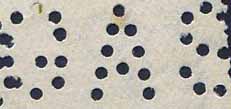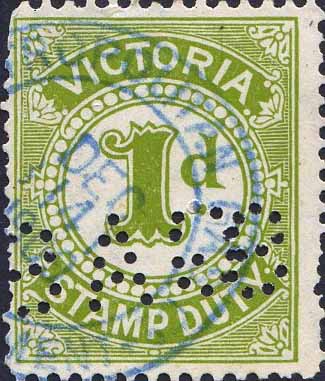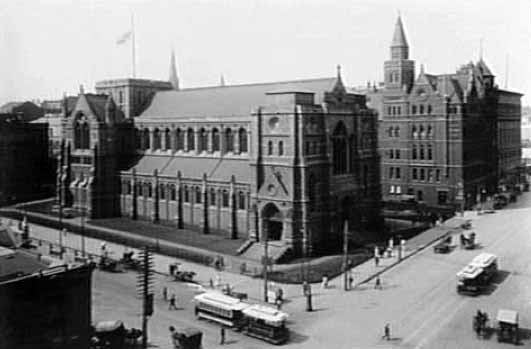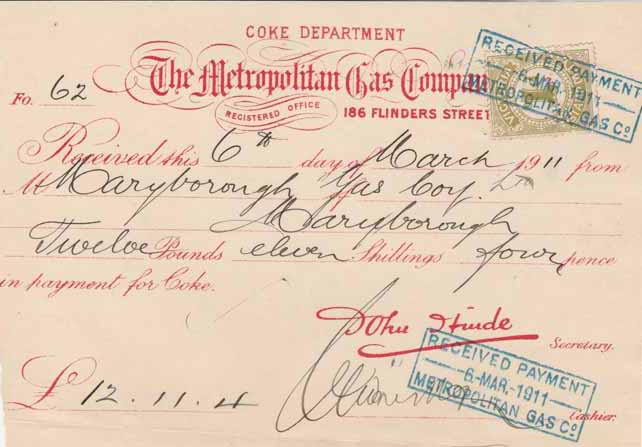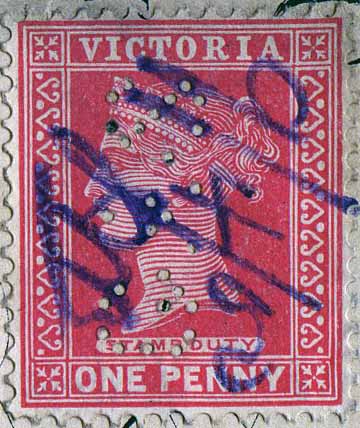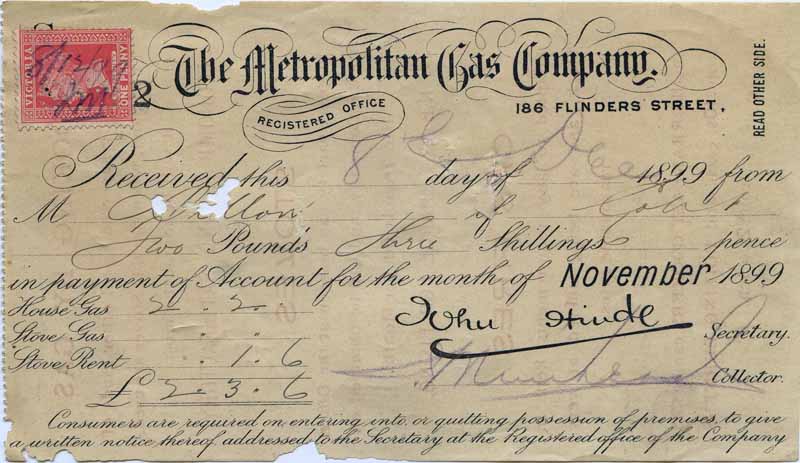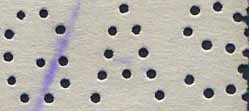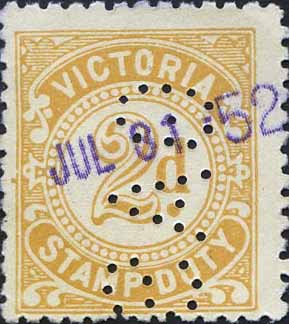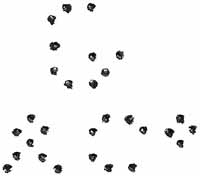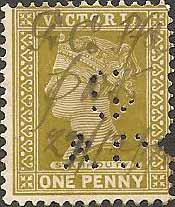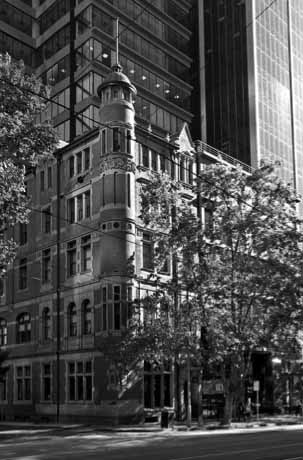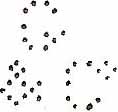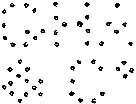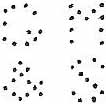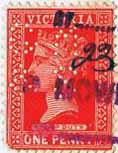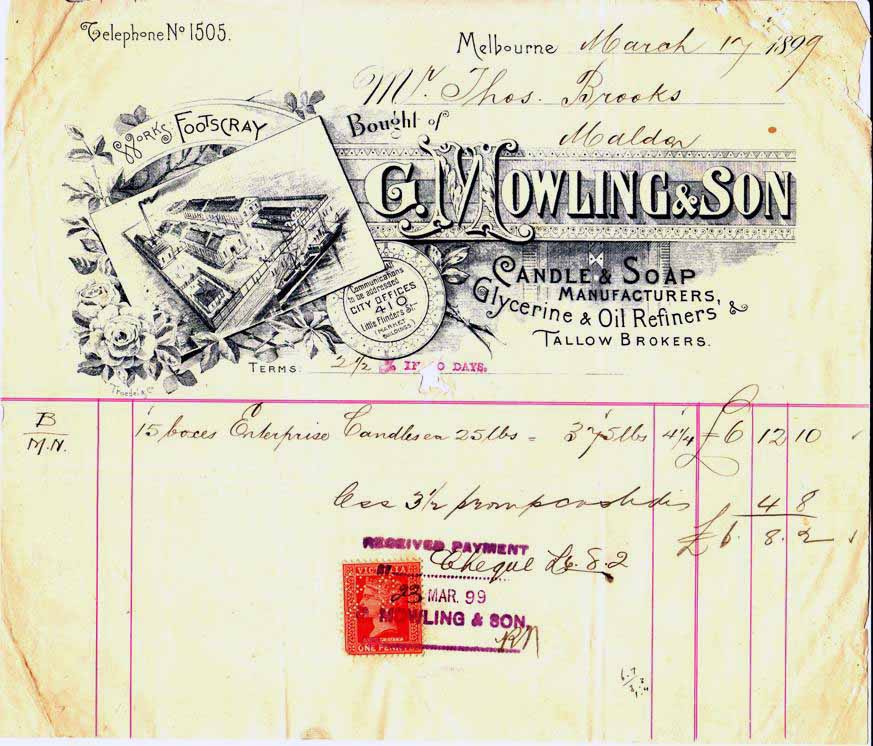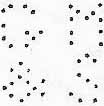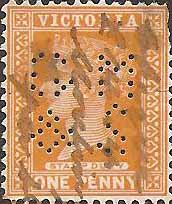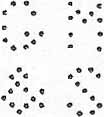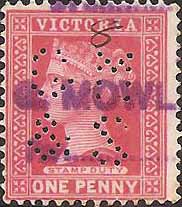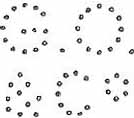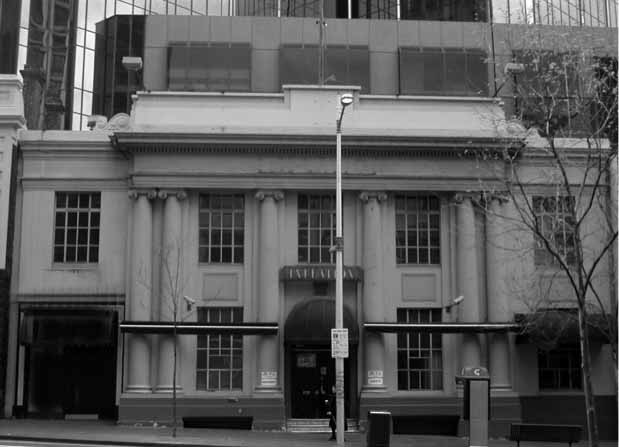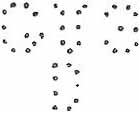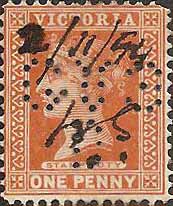|
Private Revenue Perfins of Victoria An Elsmore Coath production The authors would welcome your comments additions or input into this work A B C D E F G H I J K L M N O P Q R S T U V W Y Other G -------------------------------------------------------- GAS.a
User: Metropolitan Gas Co Gas Production and Distribution
Address: 194-196 Flinders St, Melbourne, VIC Revenue Use: 1911 Series 1d Rarity Scale:
1911 Series 1d R4
Background: *The development of gas powered Street lighting began in early Melbourne in the early 1840’s when a few City shopkeepers installed small coal gas plants to illuminate their shops. This proved so popular that the City of Melbourne Gas and Coke Co was formed in 1850. Due to manpower delays caused by the Gold Rush the company did not begin providing coal gas to shops until 1856. It was later applied to street lighting from 1857.
The demand for gas moved out to the inner suburbs of Melbourne and the number of companies providing gas increased accordingly including, The Collingwood, Fitzroy and District Gas and Coke Co (1859) and The South Melbourne Gas Co. (1873) joined the City of Melbourne Gas and Coke Co.
After 1873 there was bitter competition and gas prices fell and the major gas companies lost money, so in 1877 they agreed to amalgamate to form the Metropolitan Gas Co., and this company commenced operations on 1 January 1878.
While gas lighting remained the mainstay of the market, gas cookers, gas water heaters and gas fires grew in popularity through the 1870s, particularly during the land boom decade of the 1880s. By 1900 there the company managed 50 gasworks in Victoria and 16 in the greater Melbourne area: West Melbourne, North Fitzroy, Williamstown, South Melbourne, Brighton, Footscray, Lilydale, Newport, Dandenong, Mentone, Heidelberg, Mornington, Frankston, Oakleigh, Box Hill and Brunswick.
This five-storey building at 194-196 Flinders St, was erected as the head office and showroom of the Metropolitan Gas Co in 1892.
The Metropolitan Gas Co, was absorbed into the Gas and Fuel Corporation of Victoria in 1951 but the building at 194-196 Flinders St, remained the head office of the new Corporation until 1967 when the organization moved to its new buildings across the road (now demolished). In 1971 the Corporation acquired the Geelong Gas Company, one of only two remaining private gas companies in Victoria at the time.
The Corporation constructed a central brown coal fuelled gasification plant at Morwell in 1956, along with a high-pressure pipeline. As production increased this replaced the smaller “town gas” gasworks and storage units (gasometers) dotted around Melbourne.
Later in the 1950’s the Corporation also undertook the production of Syngas, which is a process that converted waste gases from oil refineries into a useful energy product. By 1966, thirty percent of gas was being produced from residual oil, thirty percent from refinery gas and LPG, thirty percent from Lurgi gas, and less than ten percent by carbonization of black coal.
Natural Gas was discovered in Bass Strait in 1965, and a conversion program took place over a 20-month period, ending in December 1970, in which approximately one million appliances were modified to operate on this new gas.
In July 1997 the Gas and Fuel Corporation was disaggregated into three divisions, Gas distributor and retail companies, a Gas transmission company and an independent Market Operator, VEN-Corp. The distribution, retail and transmission companies were subsequently privatised.
The Metropolitan Gas Company building behind St Paul's Cathedral circa 1914, the spire on St Paul's was added in the 1920’s.
Device: The Metropolitan Gas Company where regular and sustained users of purpose built, Customised, perfin devices. From 1888 until at least 1952 they had at least one device in their office, sometimes two, and in addition they purchased stamps from Stamp vendors with a myriad of Temporary patterns.
Few of the temporary patterns are reported on revenues but the main devices and patterns are as follows:
GAS.a (Customised) 1888-1923 GAS.a (Customised) Thicker pins fitted 1924-1940 GAS.b (Temporary) Two layout variations reported 1899-1901 G&S.a (Temporary) Error & used in lieu of A 1900 GAS.c (Customised) 1912-1923 GAS.d (Customised) 1942-1952
A note of caution some previous studies of Australian Commercial Perfins have listed incorrect usage periods for these GAS devices and patterns. For a detailed study of these GAS patterns see the Research tab on perfins.com.au
Related Patterns: Refer to other GAS patterns in:
Vic: GAS.b, GAS.c, GAS.d, G&S.a
*Walking Melbourne State Library of Victoria, Melbourne Wikipedia Trove
-------------------------------------------------------- GAS.b
User: Metropolitan Gas Co Gas Production and Distribution
Address: 194-196 Flinders St, Melbourne, VIC Revenue Use: 1886-1899 Series, inscribed 'STAMP DUTY' 1d (shades) Rarity Scale:
1886-1899 Series 1d R4
Background: See GAS.a
Device: See GAS.a
Related Patterns: Refer to other GAS patterns in:
Vic: GAS.a, GAS.c, GAS.d, G&S.a -------------------------------------------------------- GAS.c
User: Metropolitan Gas Co Gas Production and Distribution
Address: 194-196 Flinders St, Melbourne, VIC Revenue Use: 1915 Series: 2d Rarity Scale:
1915 Series 2d R4
Background: See GAS.a
Device: See GAS.a
Related Patterns: Refer to other GAS patterns in:
Vic: GAS.a, GAS.b, GAS.d, G&S.a -------------------------------------------------------- GAS.d
User: Metropolitan Gas Co Gas Production and Distribution
Address: 194-196 Flinders St, Melbourne, VIC Revenue Use: 1915 Series: 2d Rarity Scale:
1915 Series 2d R4
Background: See GAS.a
Device: See GAS.a
Related Patterns: Refer to other GAS patterns in:
Vic: GAS.a, GAS.b, GAS.c, G&S.a ------------------------------------------------------- G/&Co.a
User: Gollin & Co (later Pty Ltd) Merchants Address: 561-563 Burke St, Melbourne, VIC Revenue Use: 1886-1899 Series, inscribed 'STAMP DUTY' 1d (shades) Rarity Scale:
1886-1899 Series 1d R4
Background: *Gollin and Co (Later Pty Ltd from 1901), general merchants and importers, were first established in Adelaide in the 1870s, some sources say London, and later opened offices in Melbourne in 1889 and an office in London in 1902. They then established other Australian offices in Sydney and Brisbane, as well as New Zealand offices in Wellington, Auckland, Christchurch and Dunedin.
The principal owners and directors of the company were five members of the Gollin family. By the early 1900s, the company had secured sole agency rights for a large number of European and American exporters of foodstuffs, iron and steel, and oil. The most significant of these appears to have been the Shell Transport and Trading Co Ltd (later Royal Dutch Shell) for which Gollin and Co handled the distribution of oil and kerosene in most Australian States until 1905 when Shell established its first Australian branch.
In Melbourne from 1902, the company was located at 561-563 Bourke Street in purpose built offices and showrooms and the company occupied the building until 1966. The company became a subsidiary of Holdings company, Gollin Holdings Limited, which was incorporated in Victoria on 30 August 1957. The company went into liquidation on 30 June 1976.
Gollin & Co Pty Ltd building at 561-563 Bourke Street, Melbourne.
Device: The G/&CO.a pattern is made from a temporary die in a single die format. Such devices, which could produce these temporary patterns, were used by some Stamp Vendors in Melbourne from late 1800’s and early part of the 20th Century.
This particular pattern is known over the period 1895-1901. It is most commonly found on postage stamps. On postage stamps there is much reported variation in the layout of the pattern with different separation between letters etc. with more than 13 reported layouts. However this variation is not reported on revenue stamps and to date only one layout is reported.
Related Patterns: Refer to other Gollin & Co patterns in:
VIC: G/&Co.b
*Walking Melbourne State Library of Victoria, Melbourne Wikipedia Trove -------------------------------------------------------- G/&Co.b
User: Gollin & Co (later Pty Ltd) Merchants Address: 561-563 Burke St, Melbourne, VIC Revenue Use: 1886-1899 Series, inscribed 'STAMP DUTY' 1d (shades) Rarity Scale:
1886-1899 Series 1d R4
Background: See G/&Co.a
Device: The G/&Co.a pattern is made from a temporary die in a single die format. Such devices, which could produce these temporary patterns, were used by some Stamp Vendors in Melbourne from late 1800’s and early part of the 20th Century.
This particular pattern is known over the period 1896-1898. It is most commonly found on postage stamps. On postage stamps there is much reported variation in the layout of the pattern with different separation between letters etc. with more than 18 reported layouts. However this variation is not as commonly reported on revenue stamps and to date only 3 layouts are reported.
Related Patterns: Refer to other Gollin & Co patterns in:
VIC: G/&Co.a -------------------------------------------------------- GHA/&Co.a
User: G H Adams & Co (unconfirmed) Liquor Merchants & Improters Address: 271-275 Flinders La, Melbourne, VIC Revenue Use: 1886-1899 Series, inscribed 'STAMP DUTY' 1d (shades) Rarity Scale:
1886-1899 Series 1d R4
Background: * The history of G H Adams & Co is unclear. There was a company entitled G H Adams & Co Ltd that went into receivership in May 1895 and this may have been the company that had premises in Flinders St West and Pitt St in Sydney.
In any case the company that existed after 1895 was simply G H Adams & Co, and this company was still in business after WW2.
Device: The GHA/&Co.a pattern is made from a temporary die in a single die format. Such devices, which could produce these temporary patterns, were used by some Stamp Vendors in Melbourne from late 1800’s and early part of the 20th Century.
These particular patterns are known over the period 1896-1900. It is most commonly found on postage stamps. On postage stamps there is much reported variation in the layout of the pattern with different separation between letters etc. with more than 8 reported layouts. However this variation is not reported on revenue stamps and to date only one layout is reported.
Related Patterns: Nil
* State Library of Victoria Trove -------------------------------------------------------- GM/&S.a
User: G Mowling & Son Candle & Soap Manufacturers, Tallow Brokers Address: 410 Little Flinders St, Melbourne, VIC Revenue Use: 1886-1899 Series, inscribed 'STAMP DUTY' 1d (shades) Rarity Scale:
1886-1899 Series 1d R4
Background: *The firm of G Mowling and Sons was founded in 1870 by George Mowling in premises in Flinders St. In the early 1890’s they moved to large (4-5 acre) premises in Whitehall St, Footscray, to be close to rail and shipping hubs. Around this time their city offices moved to the “Market Buildings” although some sources state that they were still in Flinders Lane (Little Flinders St) in 1897 and possibly later.
The Footscray premises where purpose built for the company at a cost of £20,000 and there the company manufactured candles, soap and oils.
George died at the age of 69 in March 1897, following a fall from a horse drawn buggy and the business was managed by his partners.
In June 1937 to company was restructured and a limited liability company as G. Mowling and Son Pty. Ltd.
Device: The GM/&S.a pattern is made from a temporary die in a single die format. Such devices, which could produce these temporary patterns, were used by some Stamp Vendors in Melbourne from late 1800’s and early part of the 20thCentury.
These particular patterns are known over the period 1896-1900. It is most commonly found on postage stamps. On postage stamps there is much reported variation in the layout of the pattern with different separation between letters etc. with more than 10 reported layouts. However this variation is not reported on revenue stamps and to date only 2 layouts have been reported on revenue stamps.
Related Patterns: Refer to other G Mowling & Son patterns in:
VIC: GM/&S.b GM/&S.c
* State Library of Victoria Trove
-------------------------------------------------------- GM/&S.b
User: G Mowling & Son Candle & Soap Manufacturers, Tallow Brokers Address: 410 Little Flinders St, Melbourne, VIC Revenue Use: 1886-1899 Series, inscribed 'STAMP DUTY' 1d (shades) Rarity Scale:
1886-1899 Series 1d R4
Background: See GM/&S.a
Device: The GM/&S.b pattern is made from a temporary die in a single die format. Such devices, which could produce these temporary patterns, were used by some Stamp Vendors in Melbourne from late 1800’s and early part of the 20th Century.
These particular patterns are known around 1899-1900. It is most commonly found on postage stamps. On postage stamps there is more reported variation in the layout of the pattern with different separation between letters etc. with 2 reported layouts. However this variation is not reported on revenue stamps and to date only 1 layout has been reported on revenue stamps.
Related Patterns: Refer to other G Mowling & Son patterns in:
VIC: GM/&S.a GM/&S.c -------------------------------------------------------- GM/&S.c
User: G Mowling & Son Candle & Soap Manufacturers, Tallow Brokers Address: 410 Little Flinders St, Melbourne, VIC Revenue Use: 1886-1899 Series, inscribed 'STAMP DUTY' 1d (shades) Rarity Scale:
1886-1899 Series 1d R4
Background: See GM/&S.a
Device: The GM/&S.c pattern is made from a temporary die in a single die format. Such devices, which could produce these temporary patterns, were used by some Stamp Vendors in Melbourne from late 1800’s and early part of the 20th Century.
These particular patterns are known over the period 1902-1905. It is most commonly found on postage stamps. On postage stamps there is more reported variation in the layout of the pattern with different separation between letters etc. with more than 5 reported layouts. However this variation is not reported on revenue stamps and to date only a single layout has been reported on revenue stamps.
Related Patterns: Refer to other G Mowling & Son patterns in:
VIC: GM/&S.a GM/&S.b -------------------------------------------------------- G.O./&Co.a
User: Glover, Onians & Co Grain and Produce Merchants later Stock & Station Agents
Address: 54-60 King St, Melbourne, VIC Later: 24-38 Spencer St, Melbourne, VIC Revenue Use: 1911 Series 1d Rarity Scale:
1911 Series 1d R4 Background: *The company that was to become Glover, Onians & Co, started out as a grain merchant business known as Allan, Glover and Onians in the 1880's. The partnership was dissolved in 1888 but Glover and Onians seemed to have continued to operate at the address 54-60 King St, Melbourne. At this time the premises at 54-60 King St was redeveloped and a three level building (two storeys and basement) was built and this building is still in place (2015) and is a Nightclub known as “Inflation”. (see below).
Glover, Onians & Co, continued to operate as Grain and Produce Merchants but in January 1901 the company was acquired by HSK Ward and W Reid, however they continued to trade under the name of Glover, Onians & Co. By 1903 the company were also listed as General Commission agents and Auctioneers and they had regional offices in Bunyip, Garfield and Dandenong and later a Chaff mills in Melton and Werribee.
HSK Ward had been born in 1863 and he took over the Grain business that had been started in Melbourne by his parents, who had arrived in 1852. They had premises in Flinders Lane and later (24-38?) Spencer St, during the 1880’s and 1890’s.
Ward restructured his family company and Glover, Onians & Co, into HSK Ward Pty Ltd in 1921. Ward suffered from Parkinson’s Disease and retired in 1925 and his sons joined the company with the eldest, Harold becoming Managing Director by 1934. Harold died in 1950 and his position was taken by his son David aged 19. The company had difficult times over the 1950’s and 60’s but in 1967 they acquired the Food Milling company McKenzie’s to become Ward McKenzie’s Pty Ltd.
The company continued to expand from this base and in 2010 was still managed and owned by members of the Ward family.
54-60 King Street Melbourne (circa 2010)
Device: The GO/&Co.a device came into service in about 1906 and is found on the postage stamps of Victoria and then from 1913 on the postage stamps of Australia. All usage is in Melbourne and this is supported by postmark evidence. I remained in service until at least 1943.
It was a customised device in a single die format and this is proved by multiples in which the different strikes show no consistent relationship to each other. Furthermore the device is able to produce single, central strikes in both the upright and sideways positions into the large format 1930’s Commemorative issues.
Usage in the 1940’s shows an increasing number of missing pins and this deterioration may have lead to it being discontinued.
Related Patterns: Nil
*Trove Walking Melbourne -------------------------------------------------------- G&S.a
Error G&S for GAS User: Metropolitan Gas Co Gas Production and Distribution
Address: 194-196 Flinders St, Melbourne, VIC Revenue Use: 1886-1899 Series, inscribed 'STAMP DUTY' 1d (shades) Rarity Scale:
1886-1899 Series 1d R4
Background: See GAS.a
Device: The G&S.a pattern is made from a temporary die in a single die format. Such devices, which could produce these temporary patterns, were used by some Stamp Vendors in Melbourne from late 1800’s and early part of the 20th Century.
This particular pattern is known only in the year 1900. It is a rare pattern and only rarely found on postage stamps and rarer still on revenue stamps. Such a rare pattern may never have been confirmed to be an error of GAS as a postage proving cover may not have been found. However the revenue use shows the company cachet of the Metropolitan Gas Co and therefore proves that this is an error and the intended pattern was GAS much in the style of GAS.b.
See also GAS.a Device
Related Patterns: Refer to other GAS patterns in:
Vic: GAS.a, GAS.b, GAS.c, GAS.d -------------------------------------------------------- GVS/D.a
User: Unknown Address: St, Melbourne, VIC Revenue Use: 1886-1899 Series, inscribed 'STAMP DUTY' 1d (shades) Rarity Scale:
1886-1899 Series 1d R4
Background: Unknown
Device: The GVS/D.a pattern is made from a temporary die in a single die format. Such devices, which could produce these temporary patterns, were used by some Stamp Vendors in Melbourne from late 1800’s and early part of the 20th Century.
This particular pattern is known only in the year 1894. It is a rare pattern on postage stamps and rarer still on revenue stamps. On postage stamps there is some reported variation in the layout of the pattern with different separation between letters etc. but there are only 2 reported layouts. However, to date only a single layout has been reported on revenue stamps.
Related Patterns: Nil -------------------------------------------------------- A B C D E F G H I J K L M N O P Q R S T U V W Y Other © copyright 2011 |
